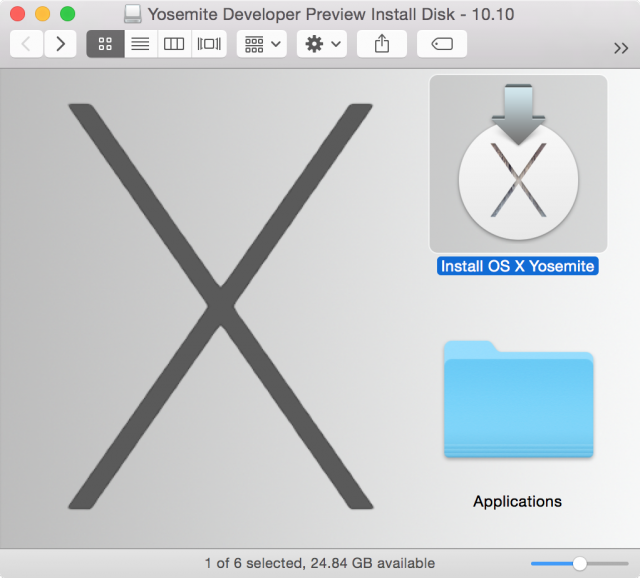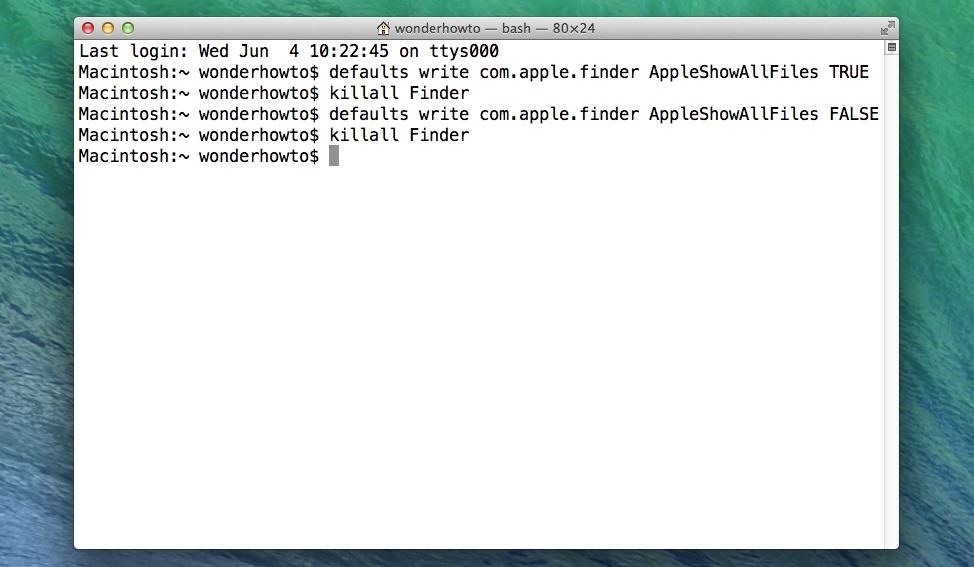Want to learn how to create a bootable USB installer for OS X Yosemite?. Here is the complete step by step guide which you can follow on your MAC create the bootable USB disc. We all know that Yosemite OS X is the latest operating system form Apple, which comes with lots of new features and improvement. If you are interested in new OS and want to try it then sign up for the OS X Beta Program here, which will allow them to test the new OS, if selected.
Mac OS X Yosemite is available for free from the Apple iTunes store. If a Mac computer has the hardware to run Mac OS X Mavericks, then it also has the hardware necessary to run X Yosemite, with the exception in some circumstances being that some Mavericks machines do not have WiFi for the Continuity feature, which allows users to pick up where they left off using any of their Apple products. Oct 18, 2014 Option 2: Use Disk Utility Once you’ve downloaded Yosemite, find the installer on your Mac. It’s called Install OS X Yosemite.app and it should. Right-click (or Control+click) the installer, and choose Show Package Contents from the resulting contextual menu. In the folder that appears, open.
Make a Yosemite boot disk!Learn how to use DiskMaker X 5 to quickly and easily create a Mac OS X 10.9 Yosemite USB Boot Disk.You can use this disk as an inst. Once you’ve done that, here’s how to install, reinstall, or upgrade Yosemite, step by step: Boot from your Recovery HD partition by restarting your Mac while holding down the Command+R keys. The OS X Utilities window appears. Select Reinstall OS X, and click Continue. The OS X Yosemite splash screen appears.
Once you have the installation app for Yosemite (Install OS X 10.10 Developer Preview), don’t install it directly, other wise you will lose the file and can’t make the USB disc. To get started all you nee a *GB or above USB drive, Apple computer with Mac App Store (10.6.8+) and OS X Yosemite installer.
Create OS X Yosemite Bootable USB Drive
Step 1. Insert the USB drive or Disc on youir MAC and run the Disk Utility app from the Applications > Utilities folder.
Step 2. Now in the app select the USB drive and Selct the Partition Tab.
Step 3. Under Partition Layout, select 1 Partition from the drop-down menu. And enter the Partition information Name: ”yosemite”, Format: “Mac OS Extended (Journaled)”. Php designer 7 free download.
Step 4. Click the Options.. button and Select GUID Partition Table. After that hit the “Ok” button then “Partition” button.
Step 5. Now the partition process will start and this will take some time to format and making USB drive as a 1 partition
Now the USB part is over and lets move to the OS X Yosemite installer package.
Step 6. Go to Applications again and find the Install OS X 10.10 Developer Preview app that you downloaded.
Step 7. Right-click the installer and select Show Package Contents from the context menu. See the Screenshot below:-

Step 8. Now navigate to Contents -> SharedSupport and open InstallESD.dmg
Step 9. This will start the verify process on your MAC. Wait for some time…….

Step 10. Once the verify process is done you will see the Package Folder.
Step 11. Don’t do anything with this Packages folder just yet. First, we need to unhide the files located in this newly mounted OS X Install ESD image.
Step 12. Launch Terminal.app to enter a command to unhide the file and folder on your MAC.
Step 13. Enter the below mention two commands one by one:-
defaults write com.apple.finder AppleShowAllFiles TRUE
killall Finder
Step 14. Now you will see three more files next to the Package folder (Step 10)
Step 15. Switch back to Disk Utility.app to select the partition name created in step 3.
Step 16. Now drag the partition from the device list to the Destination box. Also, drag the BaseSystem.dmg to the Source path
Hit the Restore button.

Step 17. Now a new popup screen appears. From here click on Erase to start the restore process, then enter in your admin password and hit OK to proceed.
Step 18. Once the restore process is done, you will see a new window son your screen. Like the screen below:-
Chehra hai ya chand khila hai remix various artist mp3. Step 19. Here, open the “System” > “Installation” folders and move the Packages file to trash.

Step 20. Now copy the Packages folder from Step 10 and paste it into the Installation folder that you just opened in previous step.
Step 21. Now Hide the system files again using this command on terminal window

defaults write com.apple.finder AppleShowAllFiles NO
That’s it!. To perform a clean install on your MAC, simply insert the USB drive that you created, power on the computer, and hold down the [option] key to access the boot selection menu. From there, select the USB drive partition, and follow the prompts to install OSX 10.10 on your Mac.
It was 2009 when Apple last released a new operating system on physical media. Things have proceeded remarkably smoothly since version 10.7 switched to download-only installers, but there are still good reasons to want an old, reliable USB stick. For instance, if you find yourself doing multiple installs, a USB drive may be faster than multiple downloads (especially if you use a USB 3.0 drive). Or maybe you need a recovery disk for older Macs that don't support the Internet Recovery feature. Whatever the reason, you're in luck, because it's not hard to make one.Create Yosemite Install Disk
As with last year, there are two ways to get it done. There's the super easy way with the graphical user interface and the only slightly less easy way that requires some light Terminal use. Here's what you need to get started.
- A Mac, duh. We've created Yosemite USB from both Mavericks and Yosemite, but your experience with other versions may vary.
- An 8GB or larger USB flash drive or an 8GB or larger partition on some other kind of external drive. For newer Macs, use a USB 3.0 drive—it makes things significantly faster.
- The OS X 10.10 Yosemite installer from the Mac App Store in your Applications folder. The installer will delete itself when you install the operating system, but it can be re-downloaded if necessary.
- If you want a GUI, you need the latest version of Diskmaker X app—we wrote this article based on version 4 beta 2, but if a 'final' version is released alongside Yosemite we'll update the article. This app is free to download, but the creator accepts donations if you want to support his efforts.
- An administrator account on the Mac you're using to create the disk.
The easy way
Once you've obtained all of the necessary materials, connect the USB drive to your Mac and run the Diskmaker X app. The app will offer to make installers for OS X 10.8, 10.9, and 10.10, but we're only interested in Yosemite today.
AdvertisementDiskmaker X has actually been around since the days of OS X 10.7 (it was previously known as Lion Diskmaker), but it's more important now because Apple has made alterations to the installer that prevent easy USB drive creation using the built-in Disk Utility app. It's still possible to create a disk manually using a Terminal command (which we'll go into momentarily), but Diskmaker X presents an easy GUI-based way to do it that is less intimidating to most people.
Select OS X 10.10 in Diskmaker X, and the app should automatically find the copy you've downloaded to your Applications folder. If it doesn't detect the installer (or if you click 'Use another copy'), you can navigate to the specific installer you want to use. It will then ask you where you want to copy the files—click 'An 8GB USB thumb drive' if you have a single drive to use or 'Another kind of disk' to use a partition on a larger drive or some other kind of external drive. Choose your disk (or partition) from the list that appears, verify that you'd like to have the disk (or partition) erased, and then wait for the files to copy over. The process is outlined in screenshots below.
The only-slightly-less-easy way
If you don't want to use Diskmaker X, Apple has actually included a terminal command that can create an install disk for you. Assuming that you have the OS X Yosemite installer in your Applications folder and you have a Mac OS X Extended (Journaled)-formatted USB drive named 'Untitled' mounted on the system, you can create a Yosemite install drive by typing the following command into the Terminal.
sudo /Applications/Install OS X Yosemite.app/Contents/Resources/createinstallmedia --volume /Volumes/Untitled --applicationpath /Applications/Install OS X Yosemite.app --nointeraction
The command will erase the disk and copy the install files over. Give it some time, and your volume will soon be loaded up with not just the OS X installer but also an external recovery partition that may come in handy if your hard drive dies and you're away from an Internet connection.
Yosemite Install Usb
Whichever method you use, you should be able to boot from your new USB drive either by changing the default Startup Disk in System Preferences or by holding down the Option key at boot and selecting the drive. Once booted, you'll be able to install or upgrade Yosemite as you normally would.